
As a woman who has been building furniture and cabinetry since 1980, when there were so few of us in woodworking shops that we prompted stares and questions (“What’s your real job?” “Did your husband teach you how to do this?”), I have a sense of how much better things are today. “Better,” of course, is not synonymous with ideal; some have tales of ongoing insult, from lower expectations and mansplaining to crude name-calling born from resentment. Nevertheless, images of women building furniture and working in other trades are increasingly common, and most prospective customers, at least in my experience, no longer assume that our work will cost less than that of our male counterparts (“because it’s not as good as a man’s” / “because your husband supports you”), or that it will be adorned with ducks and bunnies.
I’m always interested in hearing about other women who have been working professionally in this field since those lonelier days. Several months ago Chris Becksvoort introduced me to the accomplished woodworker and teacher Lynette Breton, whom I profile here.
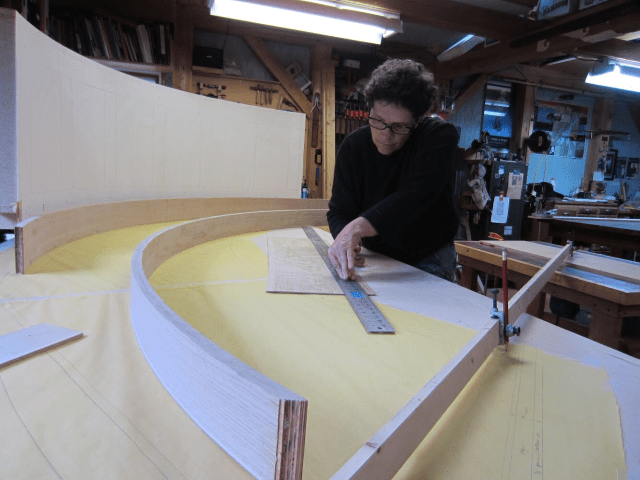
As with many furniture makers, Breton’s woodworking career grew out of her interest in art. In the 1970s she moved from her home state of Maine to San Francisco, where she planned to attend art school. At the time, California’s state colleges offered tuition-free education to state residents, a promise that proved a powerful draw to many young people. To qualify, Breton had to earn California residency, so her first step was to get a job. She was working as a bookkeeper when a friend suggested she apply at a cabinet company down the road; the Women in Apprenticeship Program was placing women in non-traditional fields, and she thought Why not try it? She applied and was hired.
Breton was one of four people in the shop, which fabricated kitchen cabinetry and other built-ins. With no previous experience in woodworking, she dove in at the deep end and was trained by her colleagues on the job. “I became completely impassioned by it,” she says. “I read everything I could and studied on my own. Fine Woodworking had just come out; I was glued to that, as well as anything else I could find to read. Technical books by Tage Frid, Krenov and designers Judy McKee and Wharton Esherick were my inspiration.” She loved it so much that she abandoned her original plan to attend art school. Instead, she worked her way into the drafting department, so she was able to combine building and design.
While working at the cabinet shop, Breton stumbled into an evening job at Pacific Atlas Woodworking, a business that built frames and chairs for upholstery. She describes the sight that captivated her when she peered through the open door: “I [remember] standing in the Pacific Atlas doorway, gazing at the turn-of-the-century production equipment and heavily-used pots of hide glue and brushes, heated for the workday in the assembly area. There were pattern templates, at least 500, hanging from the ceilings.” Her employer was so impressed by her growing skills and her eagerness to work that he took her on specifically to make things that were beyond his other employees’ capabilities, such as a three-legged table with mortise-and-tenon joinery. “I had never done anything like that,” she remembers, “but he could see my enthusiasm and gave me those opportunities.”
Inspired to deepen her knowledge and sharpen her skills, Breton took a furniture design class through the University of California-Berkeley Extension School with instructor Merryll Saylan. She also shared studio space with John and Carolyn Grew-Sheridan; she ended up working with all three artists and taught classes with them. “Carolyn Grew-Sheridan was a very recognized woman in the field [in] her time,” Breton notes. “[She died] suddenly of pancreatic cancer, and it was a big loss for many of us. I have searched for info on her through her husband, now John Sheridan, because when the Making a Seat at the Table exhibit came up, it brought up the memory of her work for me, wondering where she would have gone with it all if she had lived. I do want to memorialize her with some writing at some point but her legacy has vanished in this digital time.” (Breton sent me an article from Tradeswoman magazine, which you can read here.)
After a few years in the Bay area, Breton wanted to return to Maine. “I loved California but missed the seasons.” She and her partner decided to travel across the country, living in a camper, until they found a place to live in Maine. Unlike most people, Breton didn’t go out and buy a camper for the back of her truck; she built her own, which she describes as “a cross between a boat and a gypsy wagon.”

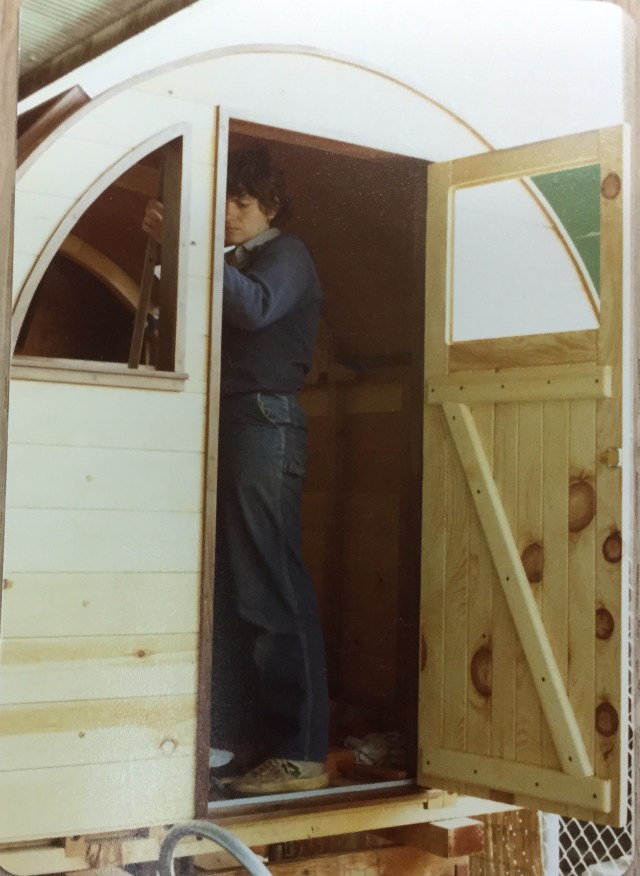
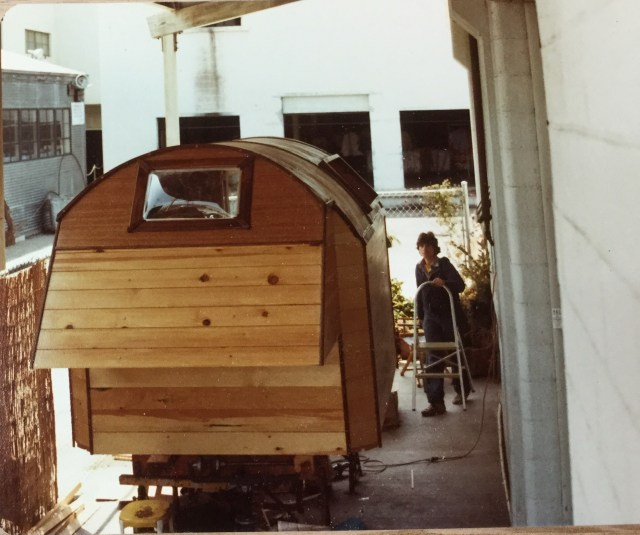
On arriving in Portland, she parked the camper in a friend’s driveway, where she stayed for a few months. The camper turned out to be important for more than sleeping. “That camper was my portfolio,” she says with a laugh. Eventually she drove it over to Thomas Moser’s shop. He hired her on a trial basis.
The first job Moser gave her was refacing the kitchen cabinets in his own home. She built the new doors and drawers in his shop. “It was still a small company,” she recalls. Chris Becksvoort and Kevin Rodel were her fellow employees. Each cabinetmaker built custom pieces from start to finish, cutting all their dovetails by hand. She worked for Moser three years.
In 1985 Breton and her friend Ann Flannery, a cabinetmaker, finish carpenter and boatbuilder, started their own business, Breton Flannery Woodworks. They bought a building in Freeport with a view to specializing in furniture and cabinets mostly of their own design. For the first couple of years Moser sent work their way – invaluable support to get them started. Eventually they began being hired for whole-house interior projects such as designing Southwestern style furniture for a home in the Bahamas and built-in cabinetry for renovations and new construction.
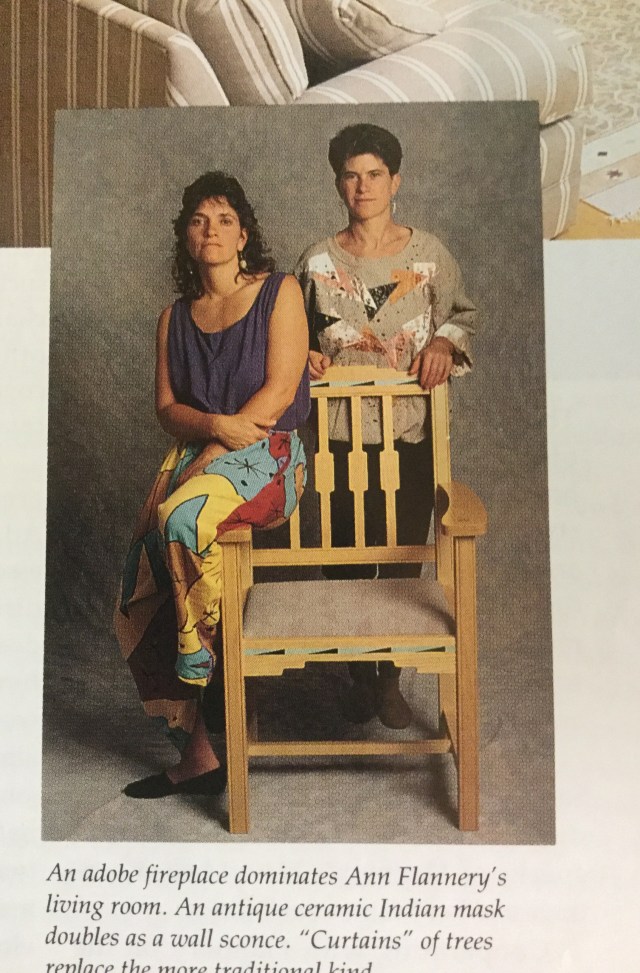
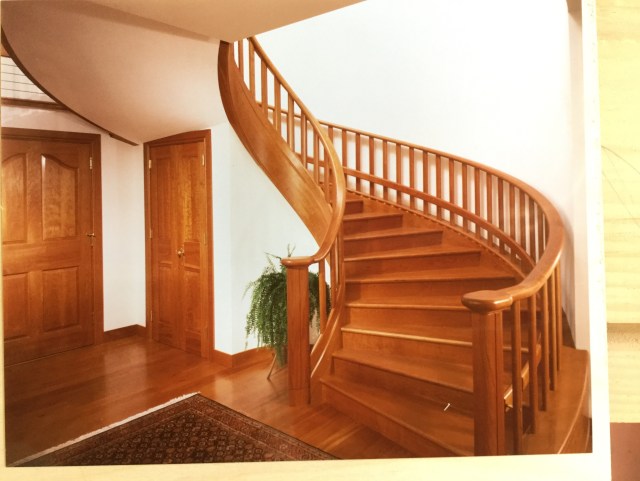
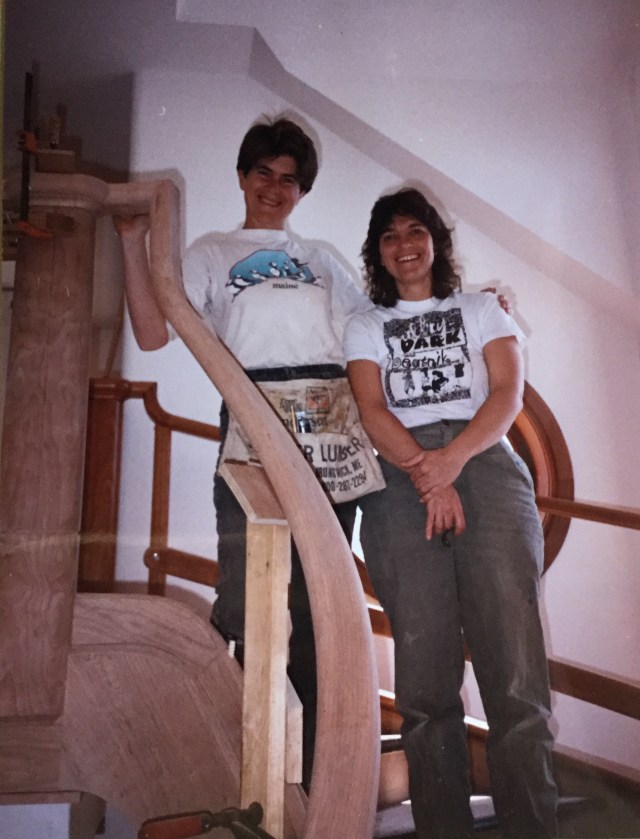
As the workload and scheduling became too much for two people, they hired employees. Lynette built select pieces while doing all the drafting, designing and customer contact. Ann led the shop employees, ordered materials and helped with estimates.

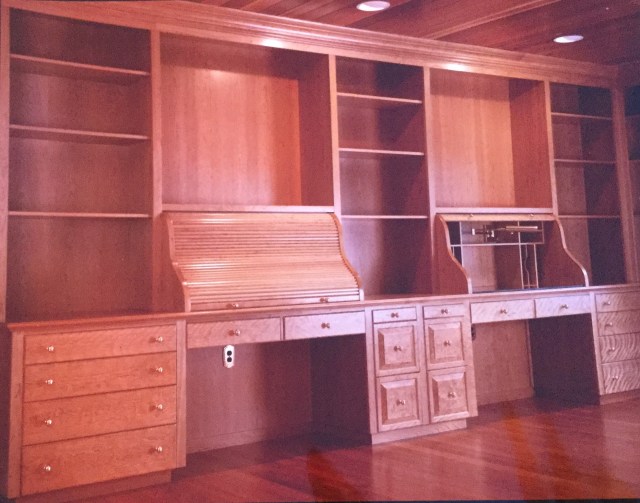
They ran the business for 10 years until a significant economic downturn led Ann to pursue a different path. Breton decided to close up shop.
From there she transitioned into teaching at the Center for Furniture Craftsmanship, where she was responsible for two- and 12-week programs. She taught there for nine years.
Finally, Lynette was ready to have her own shop again. She bought a timber-frame kit and in September 2004, had a traditional barn raising with all her woodworking friends; they completed the frame and roof sheathing in one weekend. After that, she finished the building with a few helping hands and by December she had the place running, with heat.

Some friends who had houses in Hawaii, as well as in Maine, became prominent clients, hiring her to build the furniture and cabinets for both of their homes. Breton also designed the interior of a new house for them and oversaw its construction, in addition to building some of the furniture, a process that took 2-1/2 years. Today she continues to run her business, Lynette Breton Design, taking commissions for furniture and teaching classes in her shop.
— Nancy Hiller, author of “Making Things Work.”

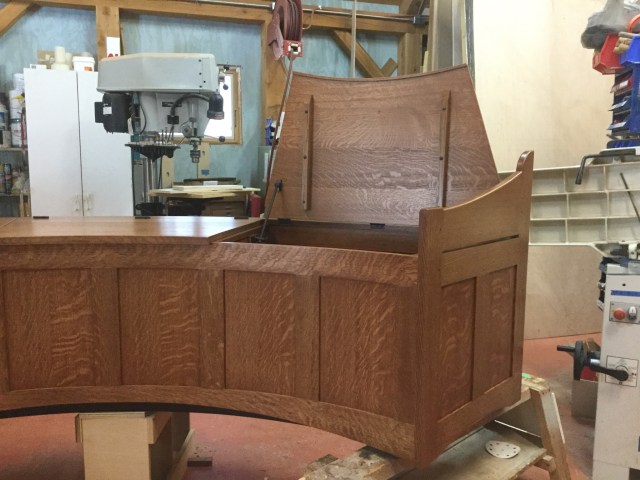
Lynette Breton and Ann Flannery will host a weeklong Maine women woodworking adventure in June 2020. For details, check her website and posts on Instagram @lynettebretondesign.